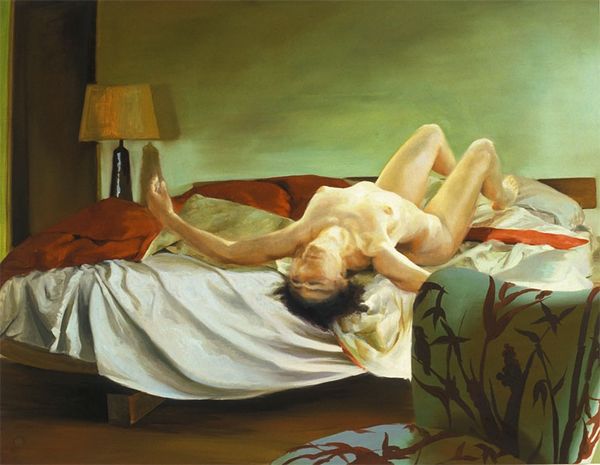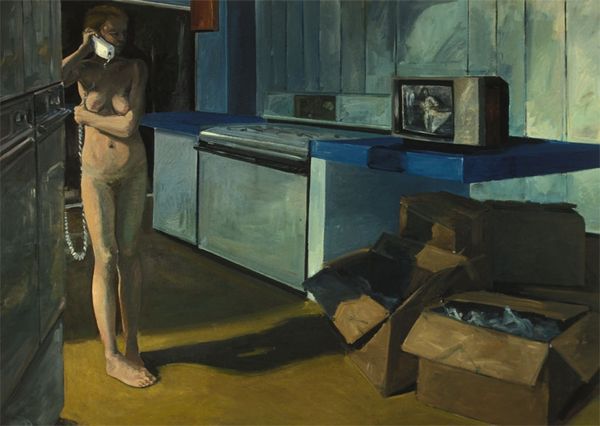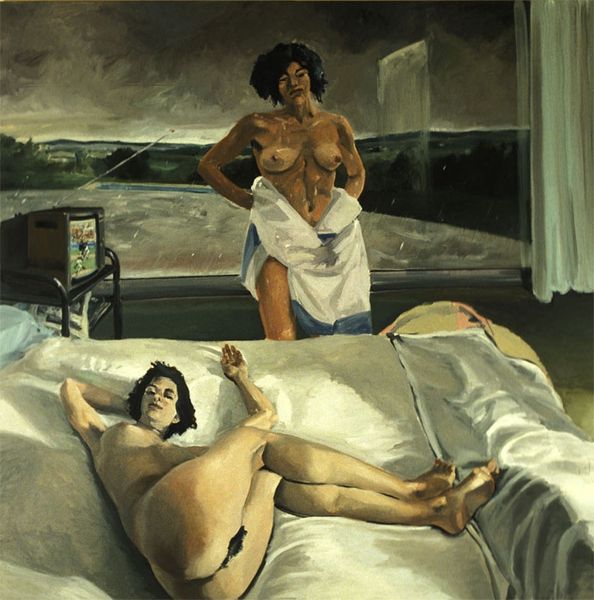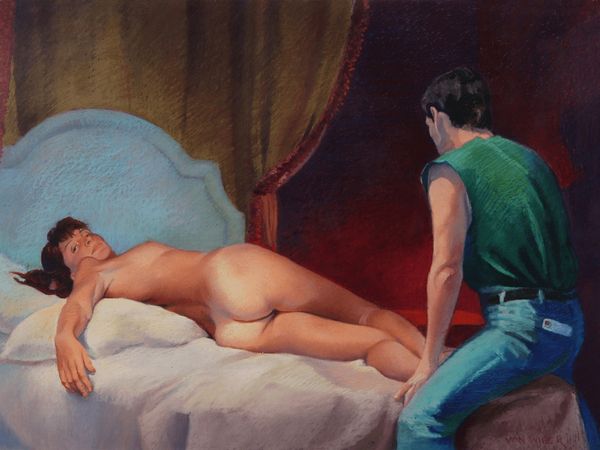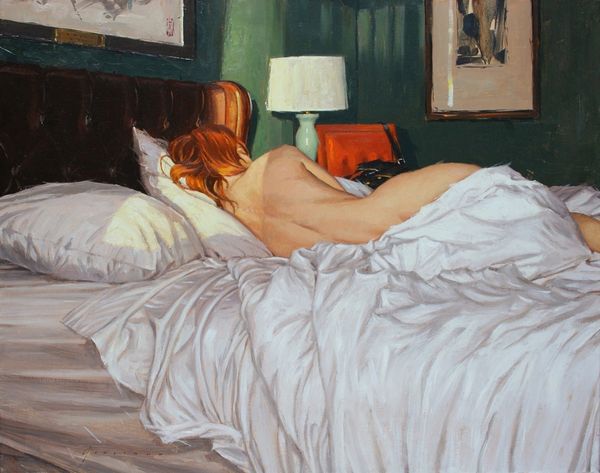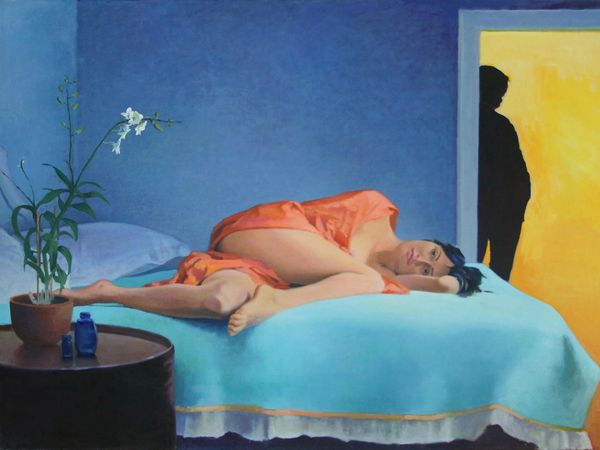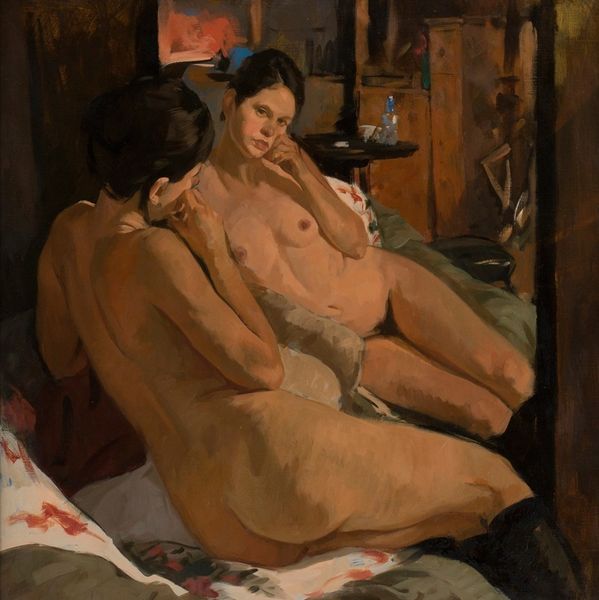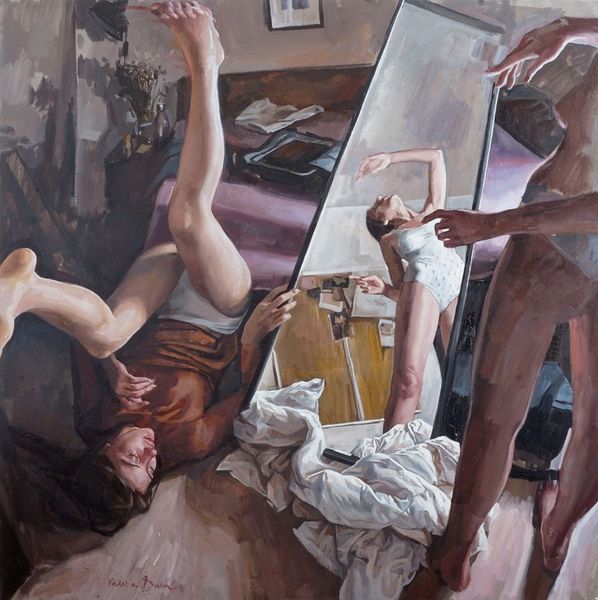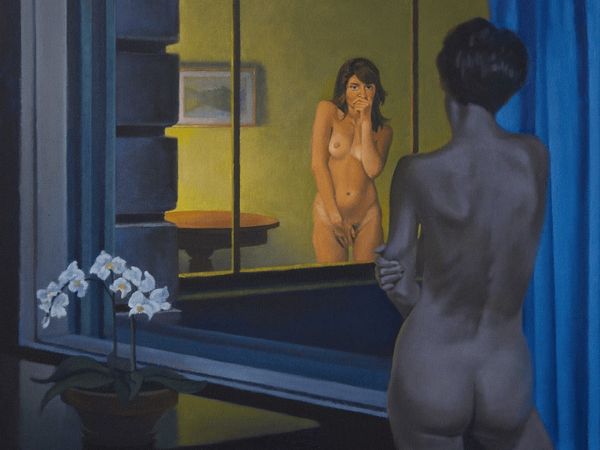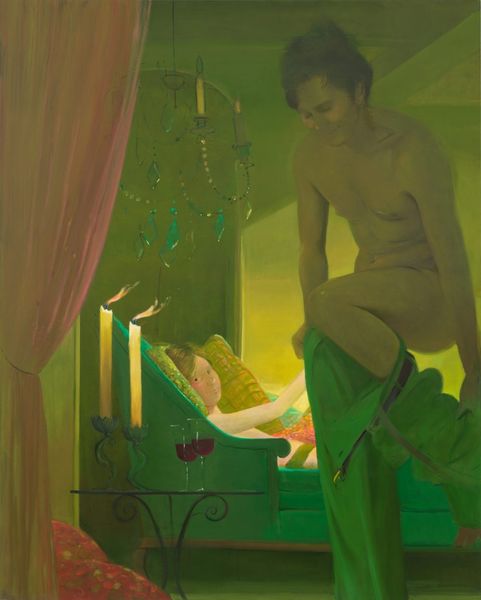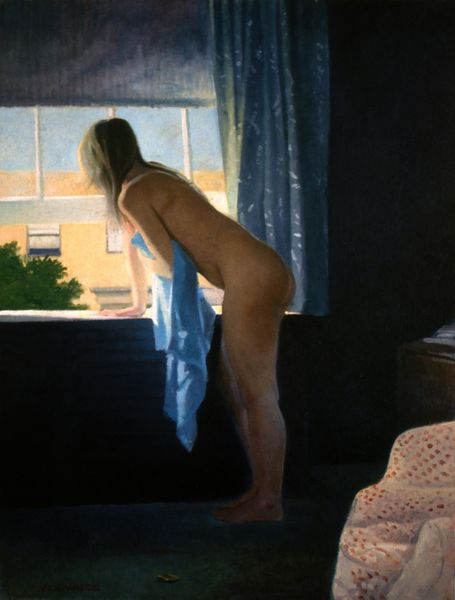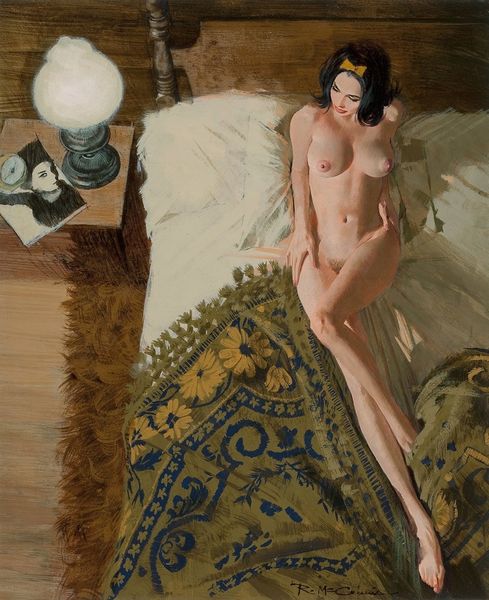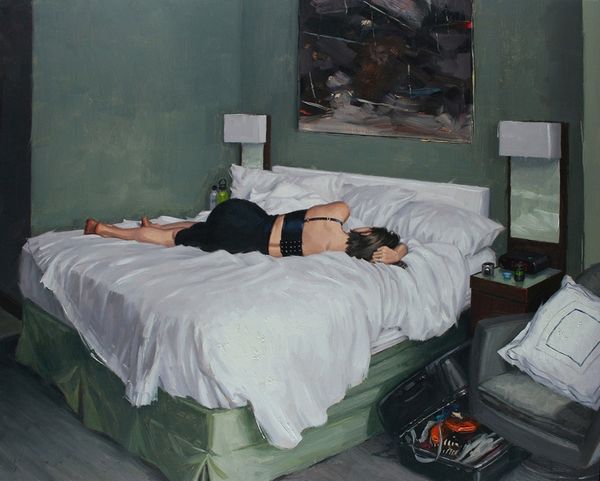
painting, oil-paint
#
portrait
#
painting
#
postmodernism
#
oil-paint
#
figuration
#
oil painting
#
female-nude
#
intimism
#
genre-painting
#
portrait art
#
erotic-art
#
realism
Copyright: Eric Fischl,Fair Use
Curator: Ah, this one always makes me stop. It's Eric Fischl's "Birthday Boy" from 1983. Oil on canvas. What's your first take? Editor: Immediately, this hits me with an uncanny blend of languor and tension. The bright red sheet almost feels like a stage, doesn't it? It frames… something I can't quite put my finger on. Curator: That "something" is classic Fischl. Suburban malaise meets suppressed desire, perhaps? Look at the way the city glitters outside the window—completely detached from the interior scene. Editor: Exactly. That urban backdrop seems to amplify the intimacy within, but also creates this unsettling distance. It highlights the contradictions of privilege, where personal dramas play out against a backdrop of societal spectacle. How are we meant to interpret these figures within their confined space? Curator: Fischl often plays with these charged relationships. The gaze is everything, right? Who's looking at whom, and what are they really seeing? The pose of the reclining woman is so deliberately casual, almost performative, in its nonchalance. And the boy… such weariness for one so young. Editor: The child's apparent lack of expression makes me very uncomfortable; they’re positioned as both witness and participant. The composition also puts her in a power dynamic. Her comfort contrasts sharply with what reads to me as their vulnerability. Fischl, by showcasing what bell hooks identified as “the oppositional gaze,” constructs an intricate tableau around questions of power and objectification within intimate environments. It isn’t comfortable, is it? Curator: It's absolutely not comfortable. Fischl's work often sits right on that edge, doesn't it? It dares us to look, but then refuses to offer any easy answers. The figures are frozen in a moment of ambiguous tension; what led up to it, and what will happen next is the stuff of speculation and perhaps self-reflection? Editor: This painting really demonstrates how art serves as a space where these anxieties are exposed, dissected, and, hopefully, interrogated to question what we perceive to be normality, within a very Western context. I imagine what it says has shifted wildly over time. Curator: Absolutely. And isn’t that the mark of something that continues to resonate, generation after generation? It doesn’t offer platitudes or clear cut moralizing, but something far more interesting – a complex human drama. Editor: A very disquieting glimpse behind a closed door indeed.
